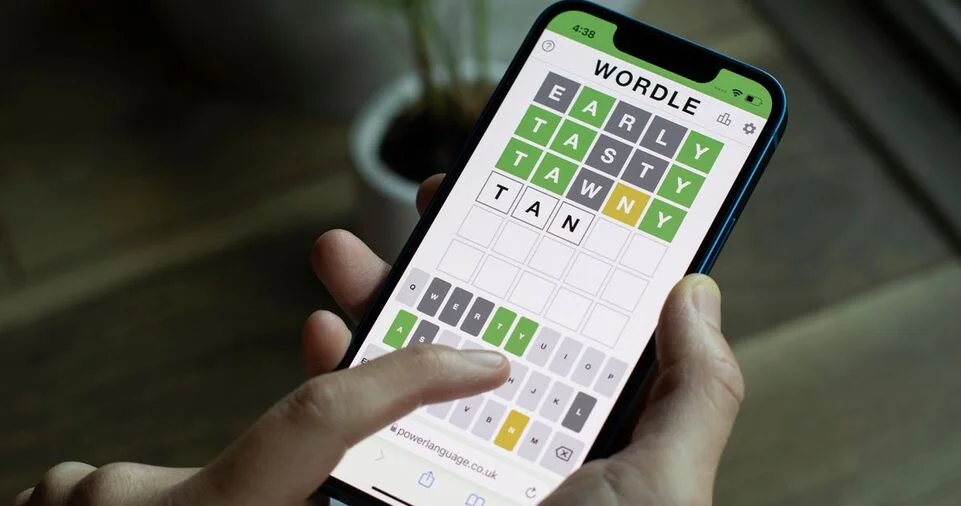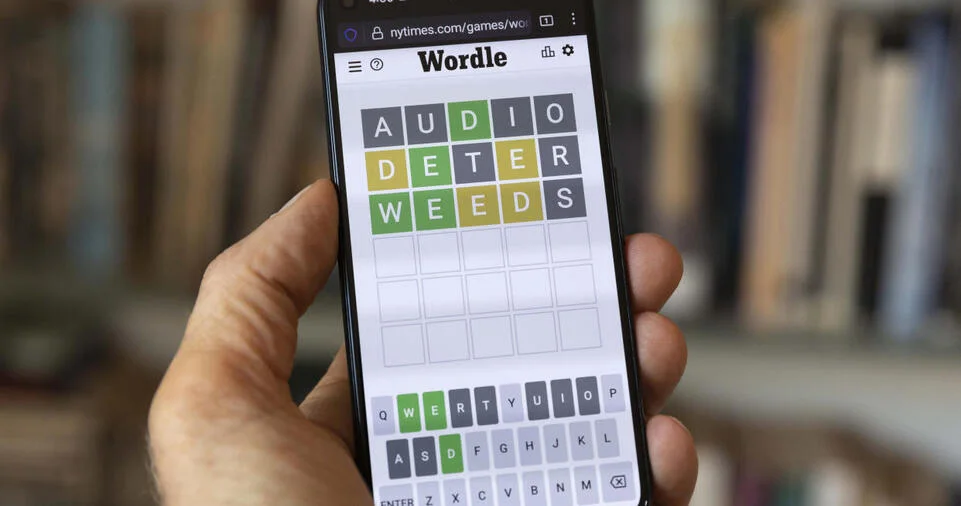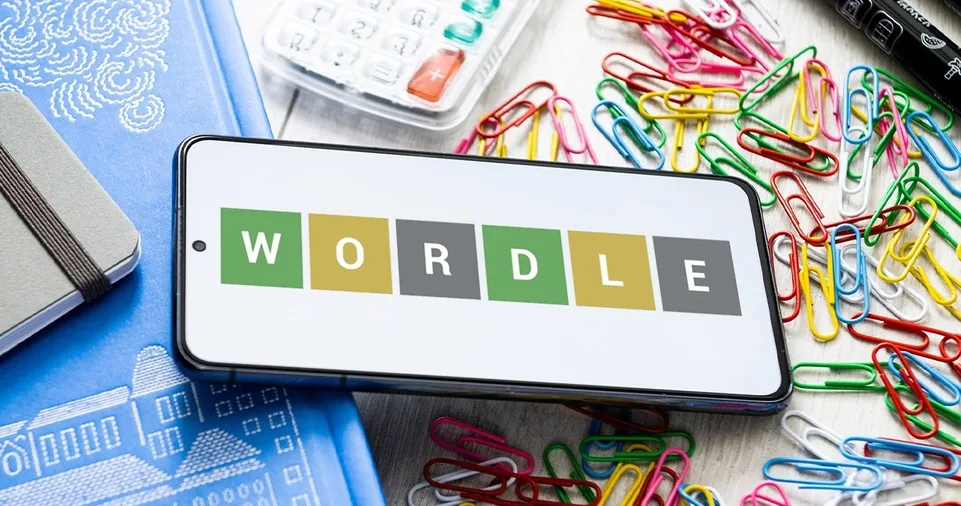Wordle has taken the world by storm, captivating players with its daily puzzle challenges.
The game’s simple yet addictive format requires players to guess a five-letter word within six attempts, making it an exciting mental exercise.
While it may seem straightforward at first glance, mastering Wordle and improving your guessing speed requires a combination of strategy, pattern recognition, and linguistic knowledge.
Many beginners struggle at first but with the right tips and strategies, it’s possible to guess words faster and more accurately.
In this article, we’ll explore detailed strategies for beginners to enhance their Wordle game.
Whether you’re just starting or looking to improve your skills, we’ll guide you through helpful techniques like how to make the most of each guess, eliminate wrong letters, and maximize your chances of success.
With practice and these tactics, you’ll soon find yourself solving Wordle puzzles with ease and efficiency.
Let’s dive into these proven methods for mastering Wordle and speeding up your guessing process.
Start with a Vowel-Heavy Word
Why Vowels Matter in Wordle
When you’re starting your Wordle puzzle, it’s essential to choose a word that maximizes your chances of uncovering vowels.
Vowels (A, E, I, O, U) are critical in Wordle since most words contain at least one vowel, and often, two or more.
By choosing a vowel-heavy word for your first guess, you can quickly identify which vowels are in the secret word and narrow down possibilities.
Best Starting Words
Some of the most effective first guesses contain a mix of vowels and common consonants.
Words like “SLATE,” “CRANE,” and “ROAST” are excellent because they feature the vowels A and E, which appear in many common words, and frequently used consonants like T, L, and R.
By selecting these types of words, you increase the chances of discovering both vowel placement and common consonants in the first round.
For instance, if your guess is “SLATE,” and the letters S and L turn green, you already know that those letters are in the correct positions.
This can give you crucial insights into how to form your next guesses. Similarly, if you find that the letter A is yellow, it means that A is in the word but not in the position you used in “SLATE.”
The Advantage of Identifying Vowels Early
The benefit of focusing on vowels first is that once you identify their presence or absence, it helps guide your future guesses.
If a vowel is not in the word, you can rule it out entirely for the rest of the puzzle, speeding up your decision-making process and narrowing down your choices.
Use the Process of Elimination
Elimination Is Key to Efficiency
As you continue through the game, it’s essential to make use of the process of elimination.
After each guess, carefully review the feedback given by Wordle to discard letters that have already been ruled out.
This not only saves you time in subsequent guesses but also helps you focus on the remaining possibilities.
Green, Yellow, and Gray – Understanding the Feedback
In Wordle, the feedback system uses three colors: green, yellow, and gray.
Each color provides valuable information to help you eliminate incorrect options:
- Green: The letter is correct and in the correct position.
- Yellow: The letter is correct but in the wrong position.
- Gray: The letter is not in the word at all.
By paying attention to these colors, you can refine your guesses.
For example, if the letter E turns gray in your guess, you can safely eliminate it from the remaining letters in the puzzle.
Similarly, if a letter turns yellow, you can experiment with different positions for that letter.
Narrowing Down the Choices
Once you’ve identified which letters are in the word and their possible positions, it’s time to eliminate other letters.
If you’ve already guessed “SLATE” and found that S, L, and A are correct, but E and T are wrong, you can now focus your attention on words that contain S, L, and A, while avoiding E, T, and other letters you’ve eliminated.
This process of elimination allows you to avoid redundant guesses and get closer to the correct word faster.
Learn Common Letter Patterns

Recognizing Common Patterns in Words
One of the best ways to guess Wordle words faster is by recognizing common letter patterns and pairings in the English language.
Many five-letter words follow consistent patterns, such as common prefixes or suffixes, letter combinations, or frequently used letters in specific positions.
Understanding these patterns can drastically reduce the time it takes to guess the word.
For example, words that end in “-ING” or “-ED” are very common in the English language.
If you’re stuck on a word with a known vowel or consonant placement, consider common suffixes like “-TION” or “-LY,” which might help you predict the word faster.
Common Consonant Combinations
In addition to suffixes and prefixes, certain consonant pairings appear frequently in words.
For instance, the combination of “TH” is common, as in “THINK,” “THROW,” and “THICK.” Similarly, “SH,” “CH,” and “ST” are common in many English words.
Once you identify certain letters, consider these pairings as possible combinations that might help you guess the word more efficiently.
Use Familiar Word Structure
Some five-letter words follow similar structures. For example, many words start with “C” followed by “R,” such as “CROWD,” “CROSS,” and “CRISP.”
Recognizing such word structures can allow you to generate potential guesses much faster, giving you more possibilities to try with fewer steps.
Pay Attention to Letter Frequency
Why Letter Frequency Is Important
Not all letters appear equally often in five-letter words. Some letters, such as E, A, R, O, T, N, L, and S, appear more frequently than others.
Understanding which letters are more likely to appear in a word can help you make smarter guesses, especially early on when you’re still gathering information.
High Frequency Letters to Focus On
Starting with words that include high-frequency letters gives you a better chance of identifying correct letters in the word.
Words like “SLATE,” “CRANE,” or “STARE” are great starting guesses because they incorporate many of the most commonly used letters in English.
Efficient Letter Usage
After each guess, you’ll have a better idea of which letters are in the word and where they may be placed.
To avoid repeating wrong letters, focus on new letters in each guess, ensuring you maximize your chances of uncovering the right letters.
The goal is to discover as many correct letters as possible while reducing the chances of using incorrect ones.
Avoid Repeating Letters Early On

Why Avoiding Repetitive Letters Is Crucial
In Wordle, repeating letters in your early guesses can be a waste of valuable attempts, especially if you’re unsure of the placement or presence of those letters in the word.
In the beginning, it’s more effective to focus on introducing new letters to maximize your information.
When to Use Repeated Letters
If you’re fairly certain a letter is in the word, you can consider repeating it in your guess.
However, try to reserve this for when you’re confident, such as after you’ve already narrowed down some letter placements.
For example, if you know that there is an “S” and you haven’t yet determined its position, using a word like “STARE” can be beneficial.
Minimizing Risk of Wasted Guesses
By focusing on introducing new letters in your first few guesses, you avoid wasting valuable attempts on guesses that don’t provide useful information.
This helps you use your guesses more efficiently, giving you a better shot at solving the word in fewer tries.
Narrow Down Letter Placement
Refining Guesses Based on Letter Placement
Once you’ve identified which letters are in the word, it’s time to focus on their placement. Letter placement is key to solving the puzzle quickly.
For example, if the letter “T” is green in the second position, you know that “T” should remain in that position for all future guesses.
Similarly, if a letter is yellow, you need to try placing it in a different position.
Use Process of Elimination for Placement
To further narrow down placements, take note of which positions are already taken by green or yellow letters.
This helps prevent guessing the same wrong position multiple times and streamlines the process of eliminating incorrect configurations.
Optimize Future Guesses
After discovering the correct placement of several letters, your guesses become more specific and efficient.
This allows you to move closer to solving the word, reducing the number of attempts needed.
Use Wordle Solvers to Your Advantage
When to Use a Solver
While solving Wordle puzzles on your own is a fun and rewarding challenge, using a Wordle solver can be helpful when you’re really stuck.
These solvers work by taking the known information about the puzzle, such as the correct letters and their positions, and suggesting possible words based on that data.
Using a solver can help speed up the process, especially when you’re down to just a few remaining possibilities.
How Solvers Can Improve Your Speed
Wordle solvers can provide immediate suggestions that can save you time and effort.
While you should rely on them sparingly, using them during difficult puzzles can help you discover words that you might not have considered, speeding up your overall process.
ALSO READ: The Best Starting Words for Wordle: A Complete Guide
Practice Regularly
Consistency Is Key
As with any game, practice is essential for improvement.
The more you play Wordle, the better you’ll become at recognizing patterns, using your guesses strategically, and eliminating incorrect letters.
Regular practice will help you develop a natural intuition for the game, speeding up your decision-making and improving your overall performance.
Learning From Mistakes
Don’t be discouraged if you don’t guess the word in the first few attempts. Take each loss as an opportunity to learn.
Review your guesses and feedback to understand what went wrong and how you can improve in future puzzles.

